KBQA: Learning Question Answering over
QA Corpora and Knowledge Bases
Wanyun Cui@FUDAN, Yanghua Xiao*@FUDAN,
Haixun Wang@Facebook, Yangqiu Song@HKUST,
Seung-won Hwang@Yonsei , Wei Wang@FUDAN
kw.fudan.edu.cn/qa
�
Backgrounds
• Question Answering (QA) systems answer natural language
questions.
IBM Watson
Google Now
Apple Siri
Amazon Alexa Microsof Cortana
kw.fudan.edu.cn/qa
�
Why QA
• QA application:
• One of the most natural human-computer
interaction
• Key components of Chatbot, which attracts
wide research interests from industries
• QA for AI:
• One of most important tasks to evaluate the
machine intelligence: Turing test
• Important testbed of many AI techniques,
such as machine learning, natural
language processing, machine cognition
kw.fudan.edu.cn/qa
Turing test
�
Why KBQA?
More and More Knowledge bases are created
• Google Knowledge graph, Yago,WordNet, FreeBase, Probase, NELL, CYC, DBPedia
• Large scale, clean data
The boost of knowledge bases
A piece of knowledge base, which consist of
triples such as (d, population, 390k)
kw.fudan.edu.cn/qa
�
How KB-based QA works?
• Convert natural language questions into structured queries over
knowledge bases.
How many people live in Honolulu?
SPARQL
Select ?number
Where {
Res:Honolulu
dbo:population ?num
}
SQL
Select value
From KB
Where subject=‘d’ and
predicate=‘population’
• Key: predicate inference
kw.fudan.edu.cn/qa
�
Two challenges for predicate inference
• Question Representation
• Identify questions with the same semantics
• Distinguish questions with different intents
• Semantic matching
• Map the question representation to the predicate in the KB
• Vocabulary gap
kw.fudan.edu.cn/qa
�
Weakness of previous solutions
• Template/rule based approaches
• Neural network based approaches
• Questions are strings
• Represent questions by string based
templates, such as regular expression
• Questions are numeric
• Represent questions by numeric
embeddings
• By human labeling
• By learning from corpus
• PROs:
• User-controllable
• Applicable to industry use
• CONs:
• Costly human efforts.
• Not good at handling the diversity of
questions.
• PROs:
• Feasible to understand diverse
questions
• CONs:
• Poor interpretability
• Not controllable. Unfriendly to industrial
application.
How to retain advantages from both approaches?
kw.fudan.edu.cn/qa
�
Our approach
• Representation: concept based templates.
• Questions are asking about entities
• Interpretable
• User-controllable
• Learn templates from QA corpus, instead of manfully construction.
• 27 million templates, 2782 intents
• Understand diverse questions
kw.fudan.edu.cn/qa
�
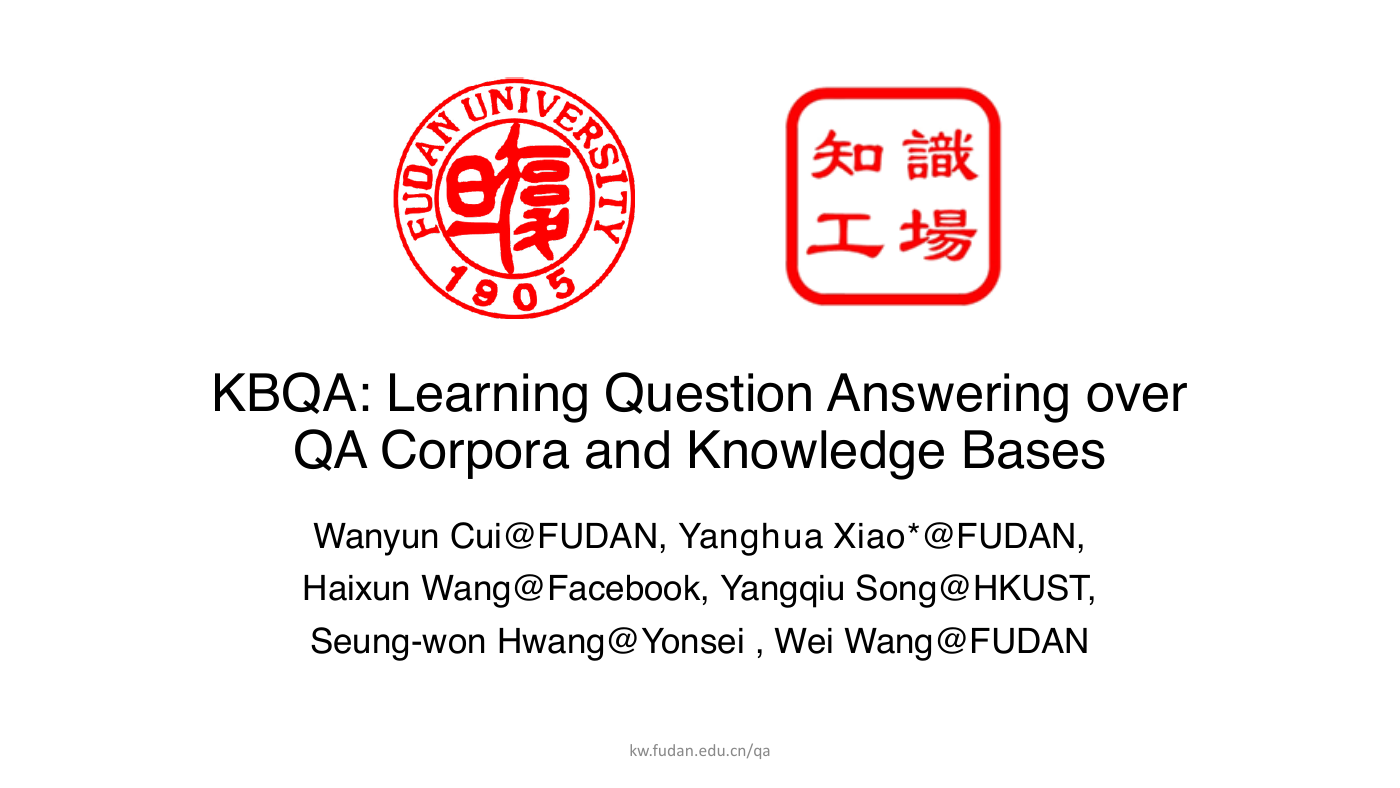
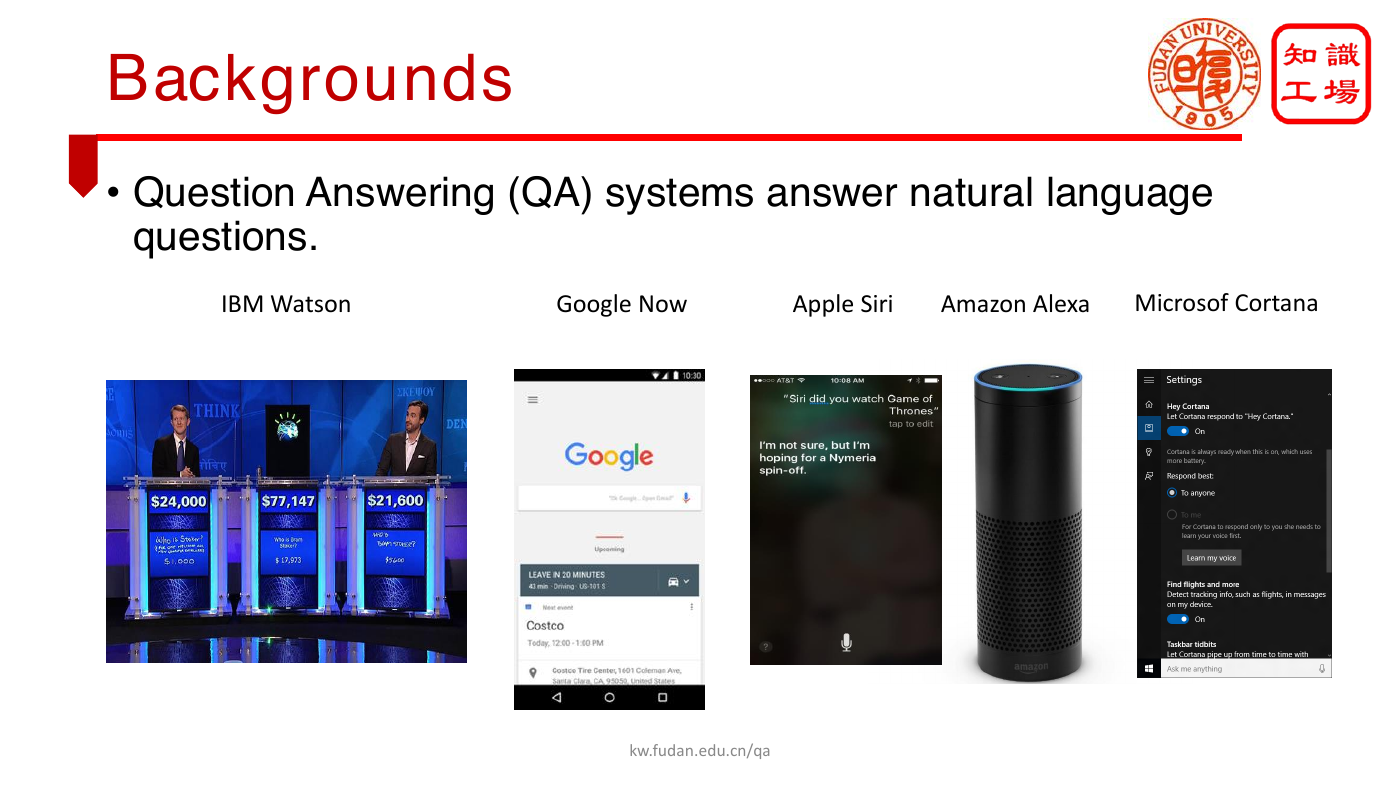
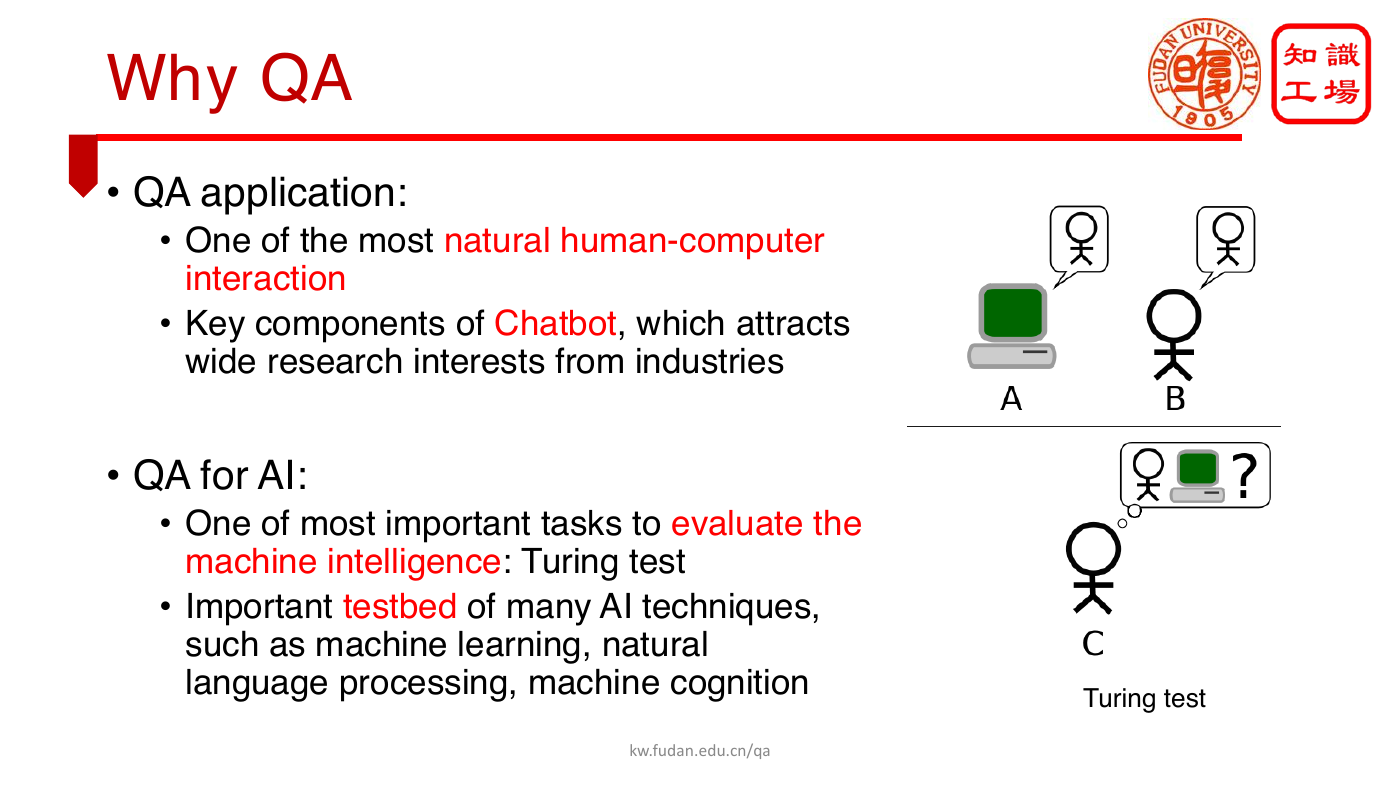
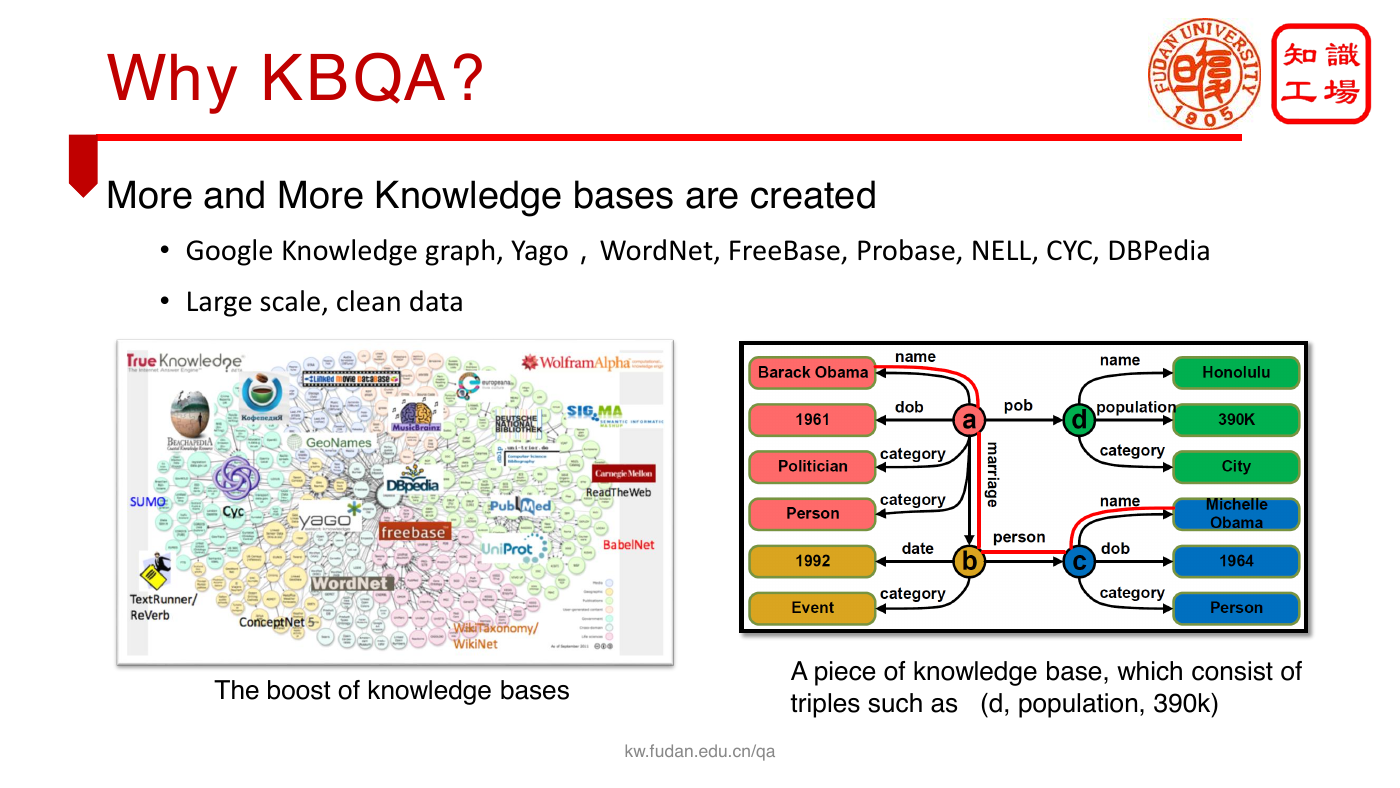
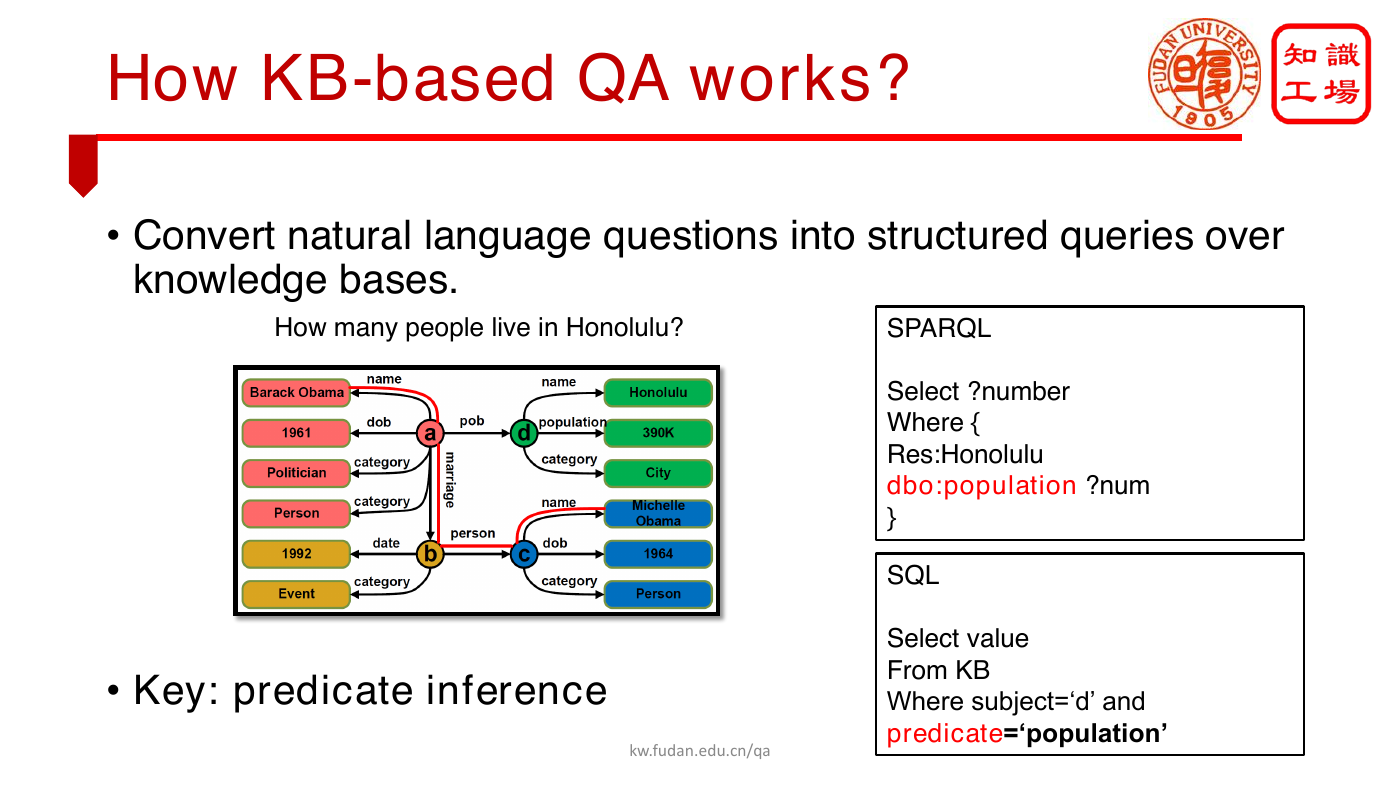
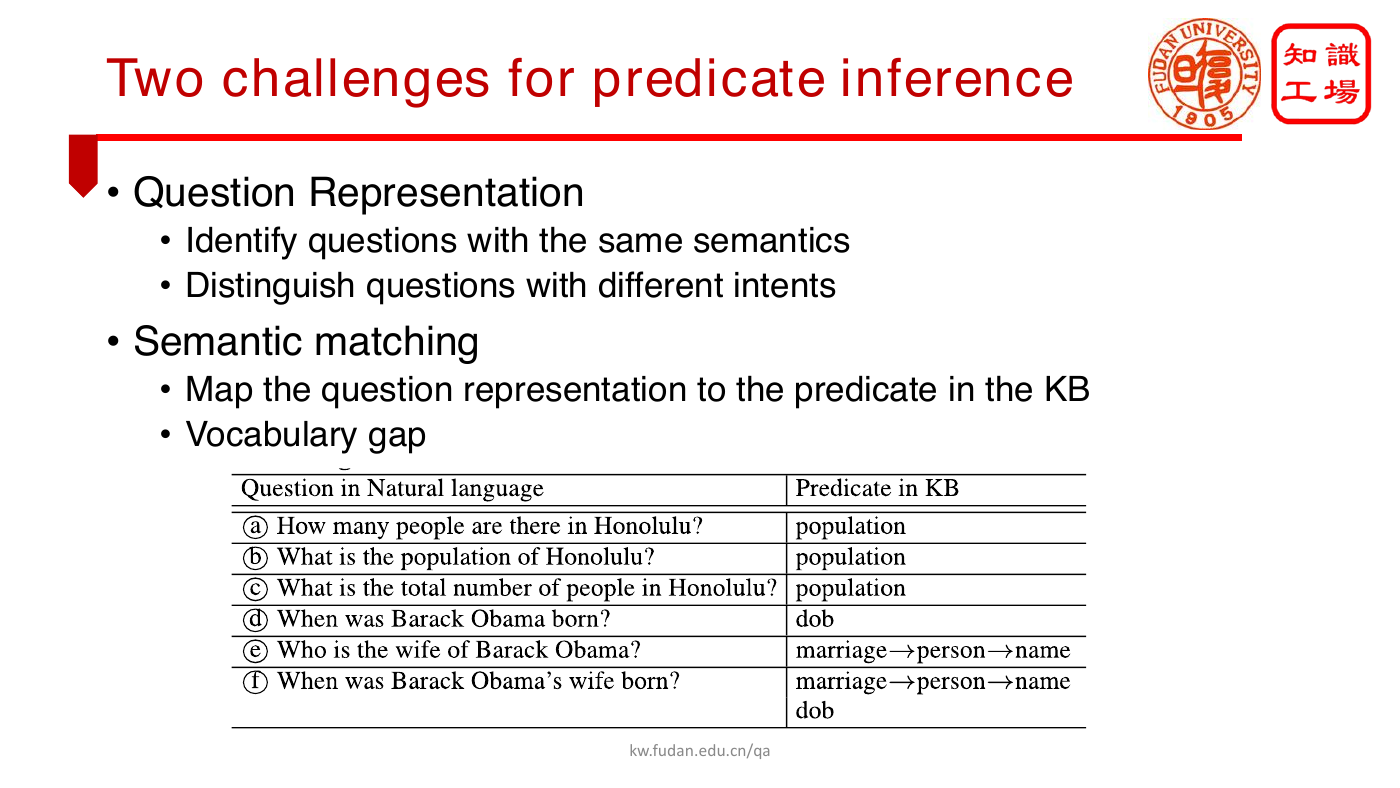
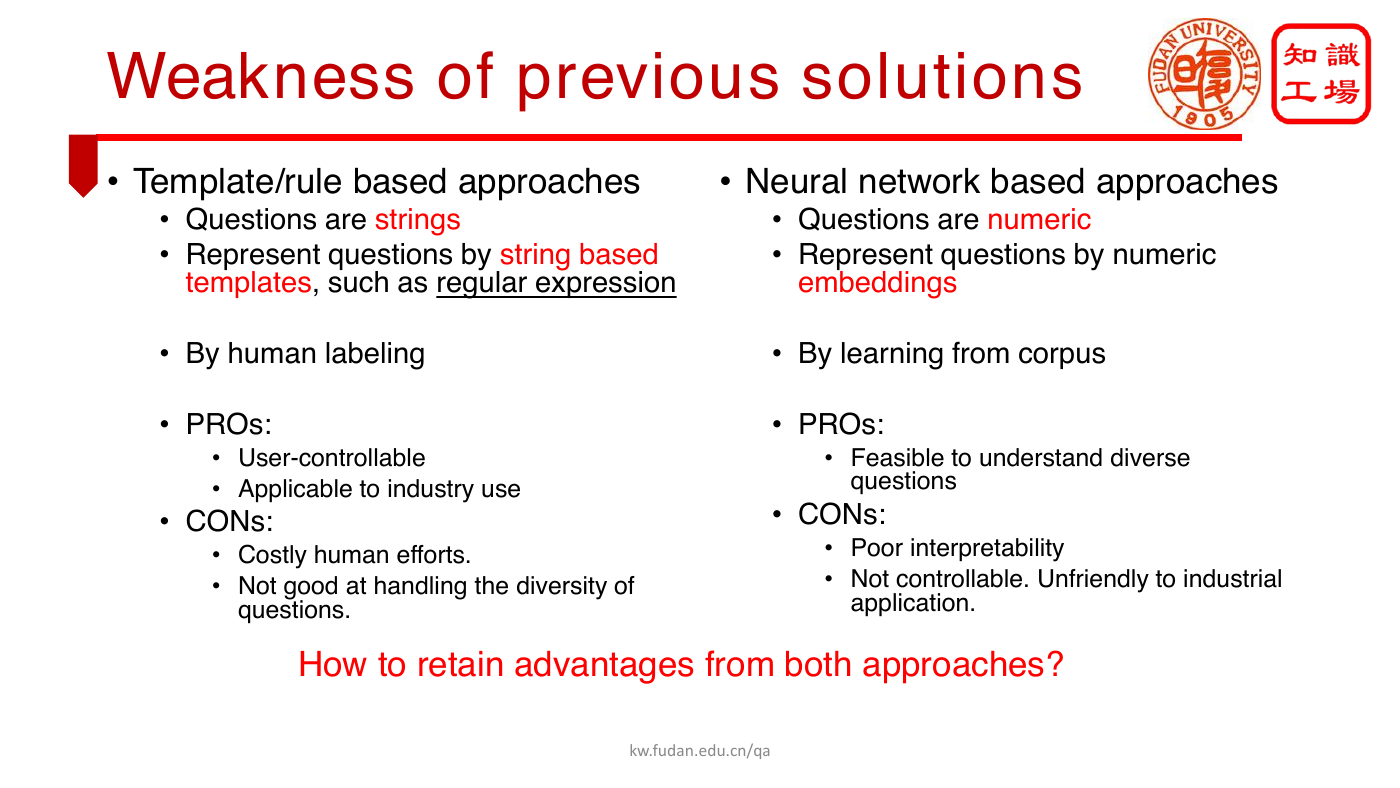
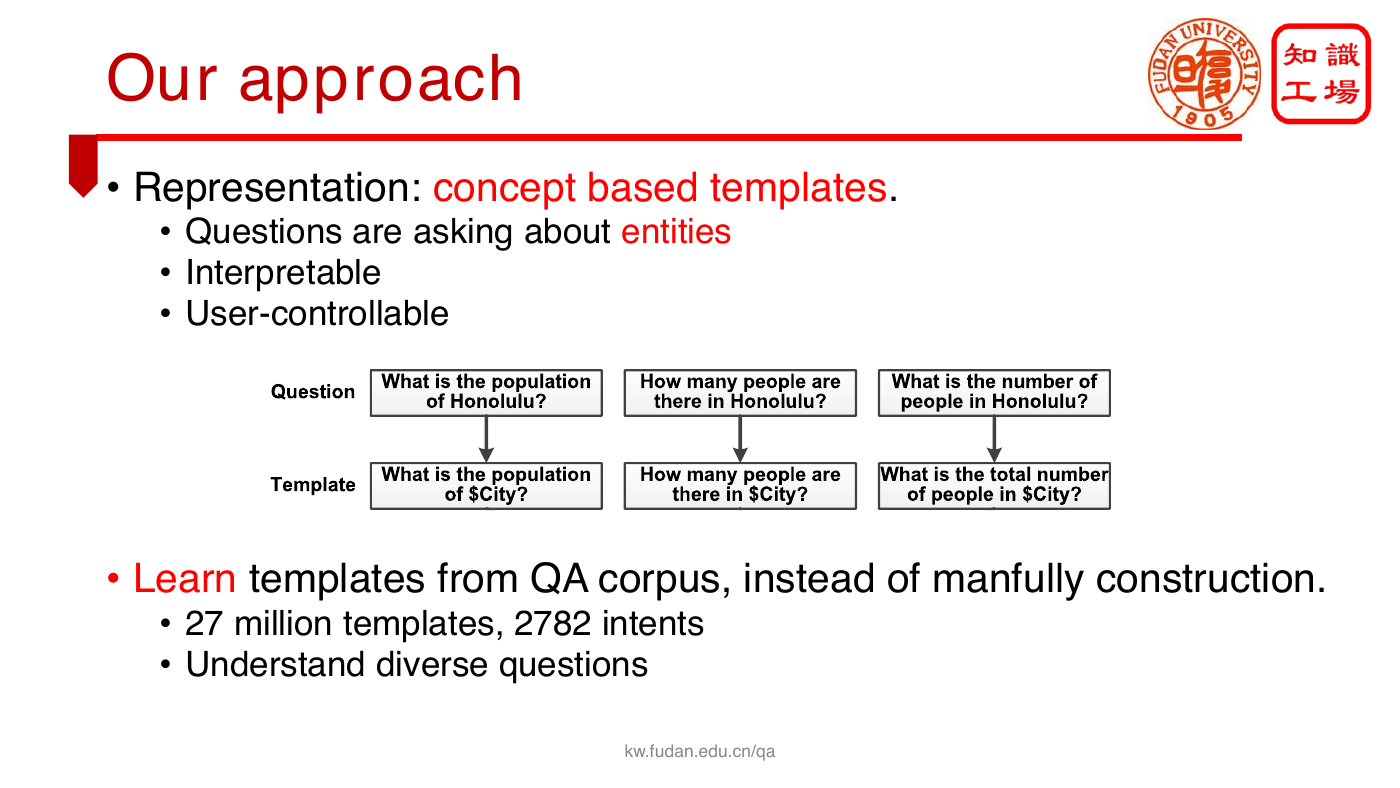








 2023年江西萍乡中考道德与法治真题及答案.doc
2023年江西萍乡中考道德与法治真题及答案.doc 2012年重庆南川中考生物真题及答案.doc
2012年重庆南川中考生物真题及答案.doc 2013年江西师范大学地理学综合及文艺理论基础考研真题.doc
2013年江西师范大学地理学综合及文艺理论基础考研真题.doc 2020年四川甘孜小升初语文真题及答案I卷.doc
2020年四川甘孜小升初语文真题及答案I卷.doc 2020年注册岩土工程师专业基础考试真题及答案.doc
2020年注册岩土工程师专业基础考试真题及答案.doc 2023-2024学年福建省厦门市九年级上学期数学月考试题及答案.doc
2023-2024学年福建省厦门市九年级上学期数学月考试题及答案.doc 2021-2022学年辽宁省沈阳市大东区九年级上学期语文期末试题及答案.doc
2021-2022学年辽宁省沈阳市大东区九年级上学期语文期末试题及答案.doc 2022-2023学年北京东城区初三第一学期物理期末试卷及答案.doc
2022-2023学年北京东城区初三第一学期物理期末试卷及答案.doc 2018上半年江西教师资格初中地理学科知识与教学能力真题及答案.doc
2018上半年江西教师资格初中地理学科知识与教学能力真题及答案.doc 2012年河北国家公务员申论考试真题及答案-省级.doc
2012年河北国家公务员申论考试真题及答案-省级.doc 2020-2021学年江苏省扬州市江都区邵樊片九年级上学期数学第一次质量检测试题及答案.doc
2020-2021学年江苏省扬州市江都区邵樊片九年级上学期数学第一次质量检测试题及答案.doc 2022下半年黑龙江教师资格证中学综合素质真题及答案.doc
2022下半年黑龙江教师资格证中学综合素质真题及答案.doc